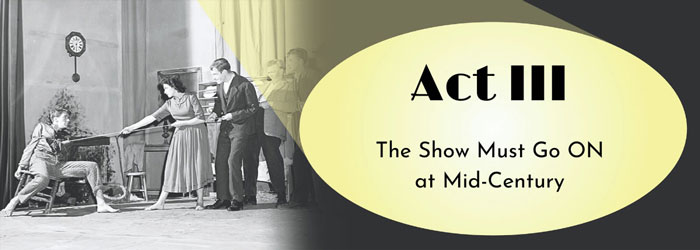
Previous | Exhibit Home | Next
The Great Depression, motion pictures, and the Second World War forced live theatre in Ontario to creatively adapt to the changing times to ensure its continued appeal. With the emerging professionalization and regulation of dramatic arts in the province, the period from the 1930s to the 1950s saw greater cultivation and recognition of home-grown talent within Ontario and on the world stage.
Vaudeville’s Curtain Call and New Opportunities
During the Depression, the inexpensive escapism afforded by motion pictures furthered the decline of foreign touring companies and vaudeville. In fact, many vaudeville theatre owners began to exclusively show films. 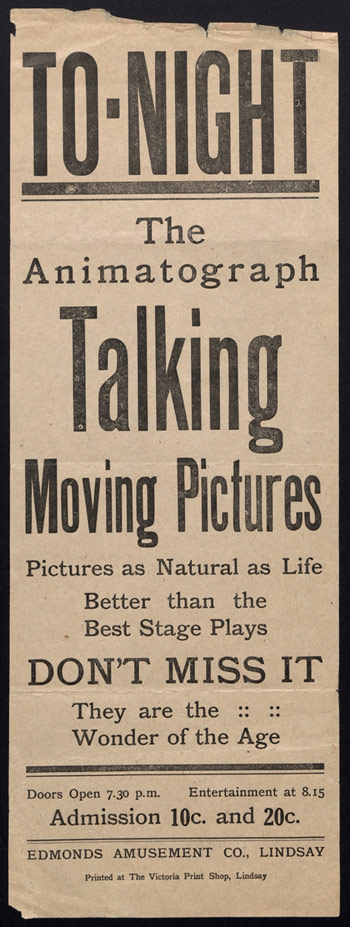
Click to see a larger image
Talking Moving Pictures by Edmonds Amusement Co., Lindsay, Ontario, [1900-1930]
Archives of Ontario poster collection
C 233-1-4-0-2091
Archives of Ontario, I0074057
With the loss of many vaudeville houses, actors had to find other venues to showcase their talents. The creative use of performance spaces also extended to backstage preparations, as illustrated by the makeshift makeup and storage areas in these photographs of Chinese actors getting ready for a show.
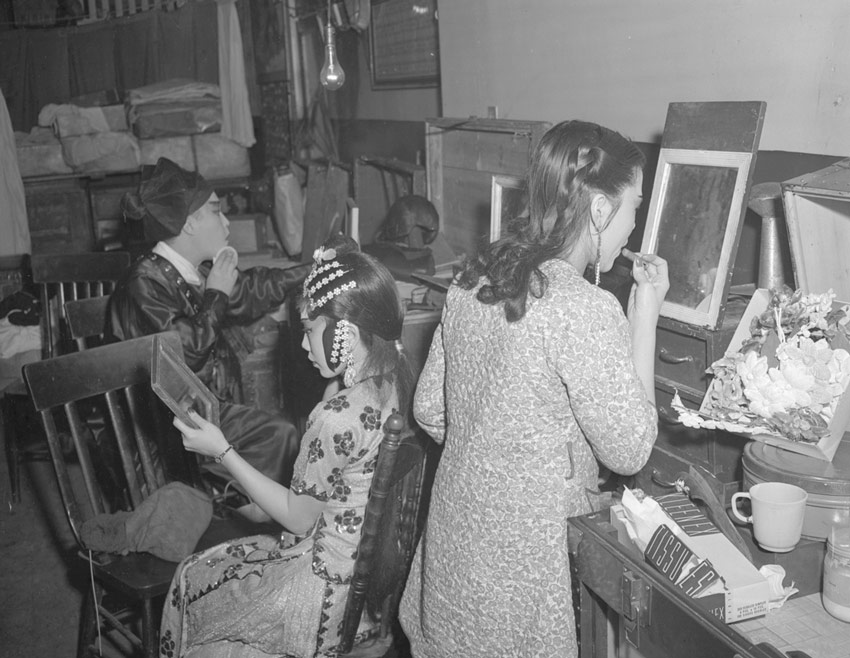
Click to see a larger image
Chinese theatre actors applying makeup for a performance in Toronto, March 1946
Gilbert A. Milne fonds
C 3-1-0-0-84
Archives of Ontario, I0019768
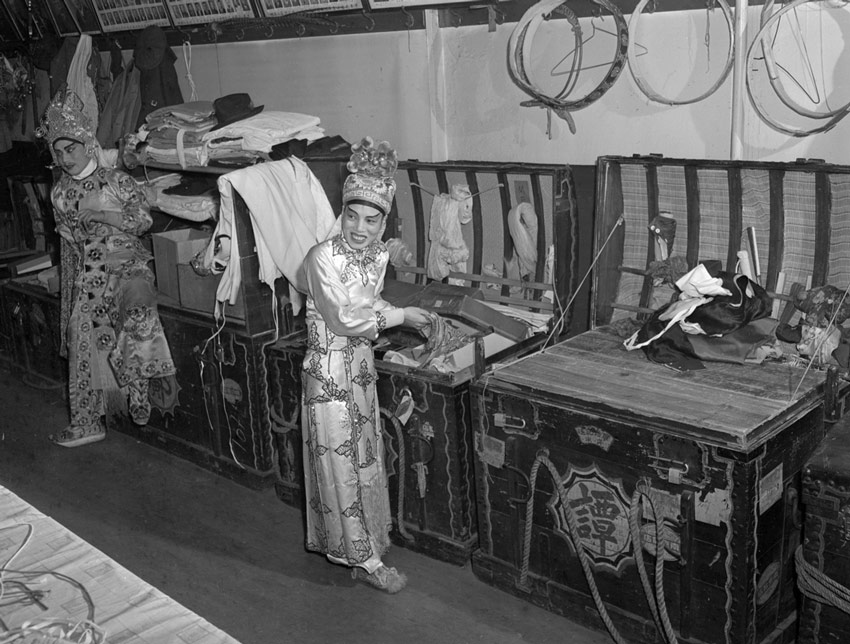
Click to see a larger image
Chinese theatre actors preparing for a performance in Toronto, March 1946
Gilbert A. Milne fonds
C 3-1-0-0-83
Archives of Ontario, I0019767
Actors benefitted from the 1000-seat auditorium that opened in 1930 in the T. Eaton Company’s flagship department store on College Street in Toronto. In addition, Canadian radio drama offered actors a lucrative way to make a living while continuing to perform on stage, and provided a forum for Canadian playwrights to feature their work.
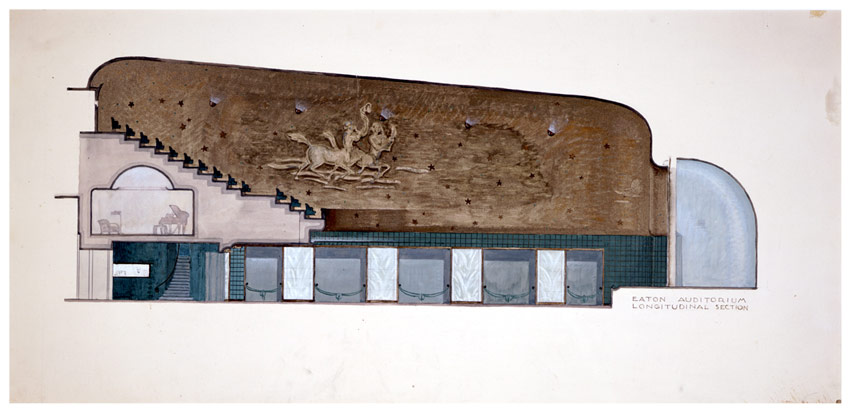
Click to see a larger image
Eaton Auditorium: longitudinal section, [ca. 1928-1930]
T. Eaton Company fonds
F 229-500-2-56 AO 1719
Archives of Ontario, I0016475
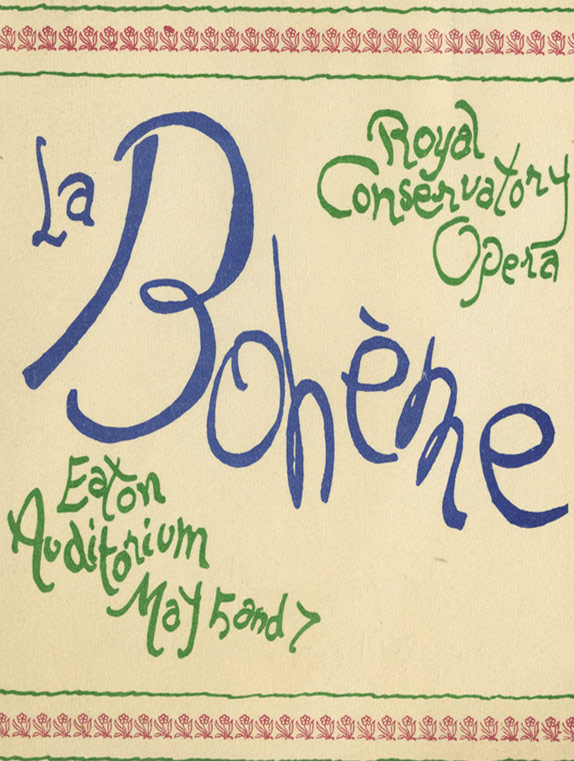
Click to see a larger image
Cover of the programme for La Bohème by the Royal Conservatory Opera at Eaton Auditorium, Toronto, Ontario, [1949]
Eaton Auditorium programmes and handbills – Eaton Auditorium Events – Programmes – Miscellaneous, 1933-1977
F 229-135
Archives of Ontario, I0074047
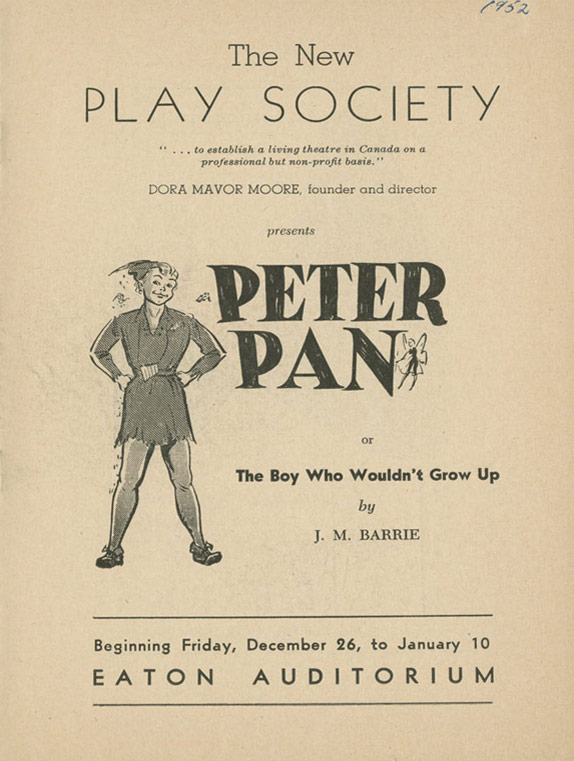
Click to see a larger image
Cover of the programme for Peter Pan by the New Play Society at Eaton Auditorium, Toronto, Ontario, [1952]
Eaton Auditorium programmes and handbills – Eaton Auditorium "N", 1932-1961
F 229-135
Archives of Ontario, I0074052
Theatre Regulation on the Rise
As live theatre developed in the twentieth century, so too did the Government of Ontario’s efforts to regulate performance venues. Theatre inspections formally began in 1913, when the Theatres and Cinematographs Act of 1911 was amended to provide for the appointment of an Inspector whose job was to ensure safety and adherence to the act. By the 1940s, inspections had become increasingly rigorous, requiring theatre owners to submit photographs of the interior and exterior of their venues as visual proof of compliance with safety standards. These photos are also invaluable as records of theatre design, showcasing innovative venues equipped to accommodate live performances and motion pictures. All the venues featured below continue their legacy as performing arts spaces.
Click on each image to learn more:
Grand Theatre,
London
View Image
-
Interior auditorium showing left side of balcony and orchestra pit of Grand Theatre, London, Ontario, 1949 (opened in 1901)
London’s Grand Theatre opened in 1901 as a venue for touring shows and vaudeville, replacing the Grand Opera House, which was destroyed by fire in 1900. The theatre was transformed into a movie house after being purchased by Famous Players in 1924. Ten years later, it reverted to live theatre when it became the home of London Little Theatre, an amalgamation of four amateur drama guilds. London Little Theatre turned professional in 1971 as Theatre London and rebranded in 1983 as the Grand Theatre. The current building, which retains the original stage and proscenium arch, continues to operate as a centre for live performance.
Ontario Treasury Department, Motion Picture Censorship and Theatre Inspection Branch – Theatre photographs
RG 56-11-0-138-2
Archives of Ontario, I0011982
Regent Theatre,
Picton
View Image
-
Exterior of the Regent Theatre, Picton, Ontario, 1947
The Regent Theatre in Picton began in 1918 using the old foundation of a former warehouse. After extensive renovation, it reopened in 1922 and has continued to showcase films and live performances through the years.
Ontario Treasury Department, Motion Picture Censorship and Theatre Inspection Branch - Theatre photographs
RG 56-11-0-207-6
Archives of Ontario, I0012541
Capitol Theatre,
Windsor
View Image
-
Auditorium and screen in Capitol Theatre, Windsor, Ontario, 1948
Known as Loew’s Windsor Theatre when it opened in 1920, the name was changed to the Capitol Theatre two years later. It was one of many venues designed by the prestigious theatre architect Thomas White Lamb, and, with close to 2,000 seats, it was the largest single-floor theatre in Canada in 1920. Today, the theatre is a designated heritage site owned by the City of Windsor, and operates as a venue for film screenings and live performances.
Ontario Treasury Department, Motion Picture Censorship and Theatre Inspection Branch - Theatre photographs
RG 56-11-0-353-2
Archives of Ontario, I0012615
Tivoli Theatre,
Windsor
View Image
-
Interior of Tivoli Theatre, Windsor, Ontario (looking from balcony to stage), October 20, 1947
The Tivoli Theatre in Windsor opened in 1920 as The Walkerville Theatre and functions today as a performing arts venue called the Olde Walkerville Theatre.
Ontario Treasury Department, Motion Picture Censorship and Theatre Inspection Branch - Theatre photographs
RG 56-11-0-361-1
Archives of Ontario, I0012845
Regent Theatre,
Oshawa
View Image
-
Façade and marquee of Regent Theatre, and street, Oshawa, Ontario, October 20, 1947
Opened in 1921, the Regent Theatre in Oshawa is now owned by the University of Ontario Institute for Technology. It was renovated in 2010 and serves as a lecture theatre for students and a forum for community and cultural events.
Ontario Treasury Department, Motion Picture Censorship and Theatre Inspection Branch - Theatre photographs
RG 56-11-0-175-2
Archives of Ontario, I0012524
Theatre Goes Pro: The New Play Society
As one of the first organizations to produce Canadian plays, the New Play Society—the Toronto organization founded by Dora Mavor Moore in 1946—was instrumental in cultivating professional theatre in Canada. With a lack of suitable performance venues after the Second World War, the Society, like many acting groups at this time, staged its first productions in the small theatre in the basement of the Royal Ontario Museum.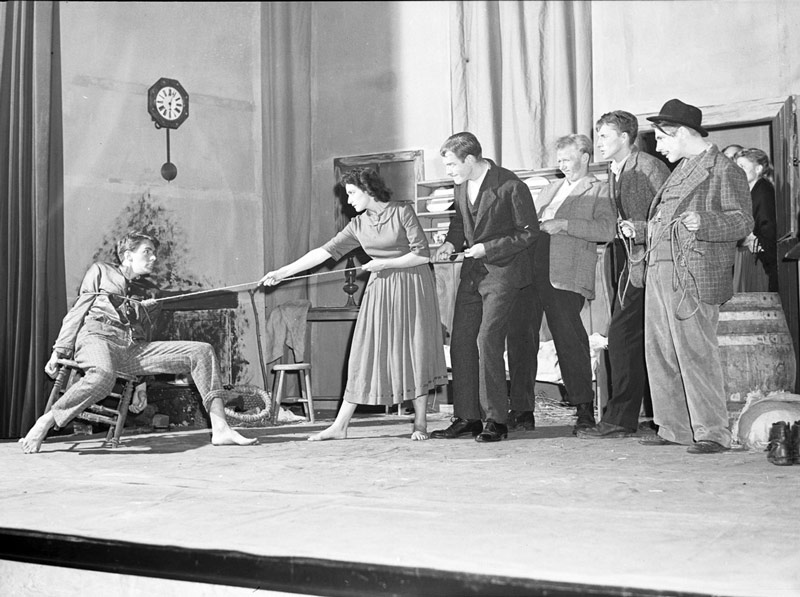
Click to see a larger image
First production of the New Play Society,
Royal Ontario Museum, Toronto, Ontario,
October 12, 1946
Canada Pictures Limited fonds
F 4485-13
Archives of Ontario, I0055087
Summer Stock
Ontario’s major cities weren’t the only locations to witness the development of professional theatre in the mid-1900s. Capitalizing on the appetite for light farce and comedy in Muskoka and other summer tourist destinations, the success of groups like the Actors’ Colony Theatre expanded Ontarians’ appetite for live theatre and contributed to the growth of cultural tourism.
Starting in 1936, the Actors’ Colony Theatre gave performances on Monday evenings in the rotunda ballroom of Bigwin Inn—a resort for the wealthy in Lake of Bays, Muskoka.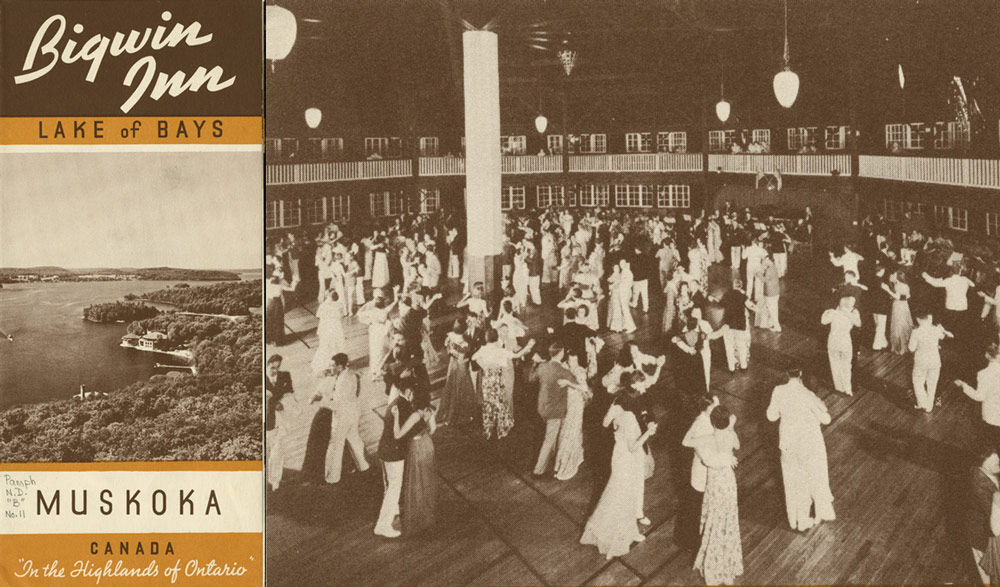
Click to see a larger image
Cover of Bigwin Inn, Lake of Bays, Muskoka, Canada pamphlet, and detail of rotunda ballroom, [1937?]
Archives of Ontario Library Collection,
PAMPH n.d. B #11
I0074040 & I0074039
The Massey Report
The Report of the Royal Commission on National Development in the Arts, Letters and Sciences in 1951 (the Massey Report) fuelled the expansion of professional theatre in Ontario. Chaired by the Hon. Vincent Massey, the Commission’s recommendations led to the formation of the Canada Council for the Arts in 1957—a Crown corporation that continues to offer government support for professional artists and arts organizations.
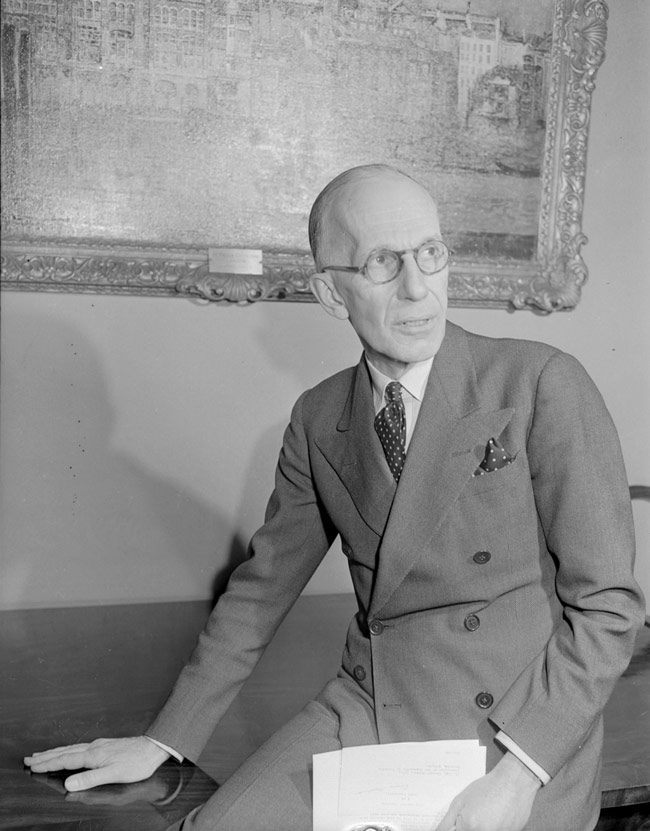
Click to see a larger image
Vincent Massey, April 18, 1949
Gilbert A. Milne fonds
C 3-1-0-0-547
Archives of Ontario, I0020160
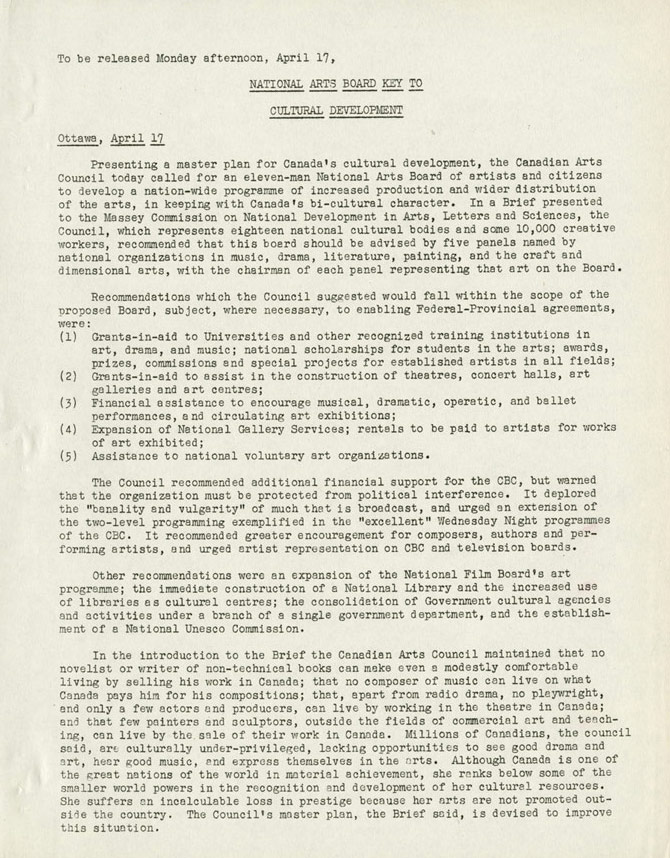
Click to see a larger image
National Arts Board Key to Cultural Development, April 17, [1949]
Briefs submitted to the Royal Commission on the National Development in the Arts, Letters, and Sciences (Massey Commission)
RG 2-78
Archives of Ontario, I0074042
Stratford in the Spotlight
The Stratford Festival was also instrumental in the development of professional theatre in Ontario in the postwar years. Initially called the Stratford Shakespearean Festival, it started in 1953 as a venture to improve Stratford’s economy. One reason for its success? Tanya Moiseiwitsch’s innovative thrust stage (shown below), which ensured that no spectator in the 1,800-seat venue would be more than 20 metres from the stage. The Stratford Festival laid the foundation for other renowned Ontario theatre festivals, such as the Shaw Festival and Blyth Festival. Stratford remains one of the most prominent arts festivals in Canada, recognized internationally for its productions of Shakespearean plays and contemporary theatre.
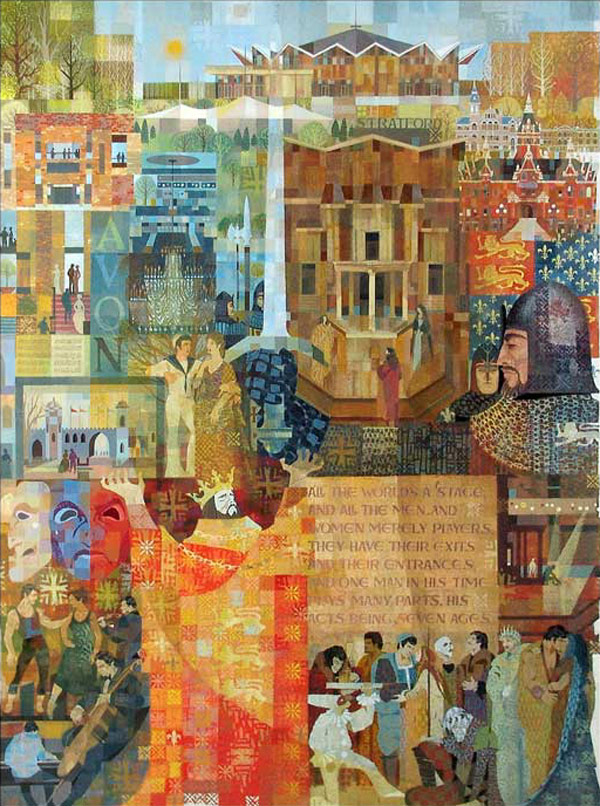
Click to see a larger image
Stratford, [ca. 1968],
by Donald Lewis
Acrylic on canvas, 259.1 x 198.1 cm
Government of Ontario Art Collection, AC619764
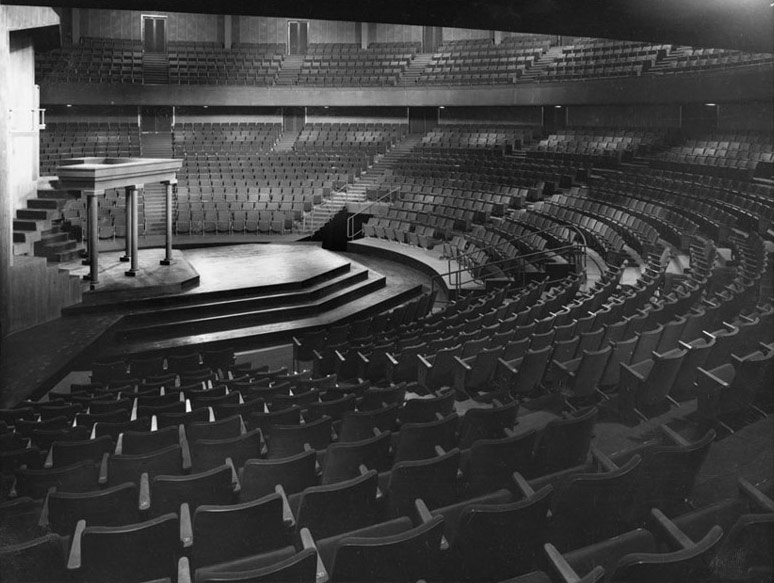
Click to see a larger image
Festival Theatre auditorium,
Stratford Shakespearean Festival, Stratford, Ontario,
[ca. 1953]
Stratford Shakespeare Festival photographs
C 224-21
Archives of Ontario, I0055088
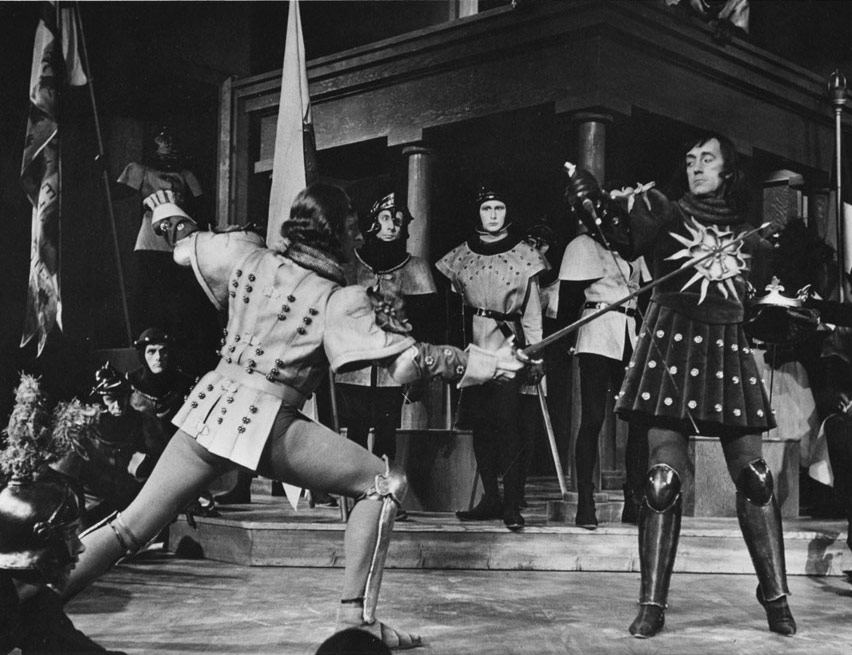
Click to see a larger image
Scene from Richard III, the inaugural production of the Stratford Shakespearean Festival at the Festival Theatre, Stratford, Ontario
(left: Robert Goodier as Richmond; right: Alec Guinness as Richard III), 1953
Stratford Shakespeare Festival photographs
C 224-21
Archives of Ontario, I0055090
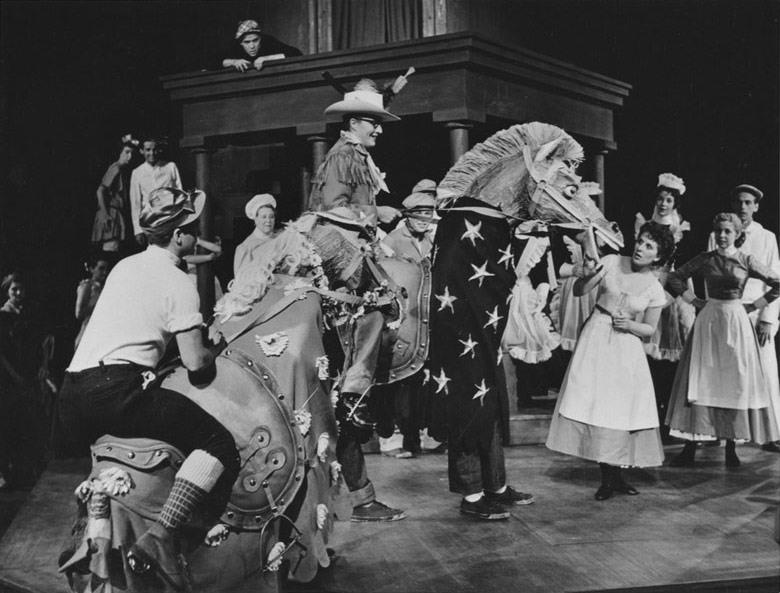
Click to see a larger image
Scene from The Taming of the Shrew during the second season of the Stratford Shakespearean Festival at the Festival Theatre, Stratford, Ontario (centre: William Needles as Petruchio), 1954
Stratford Shakespeare Festival photographs
C 224-21
Archives of Ontario, I0055091
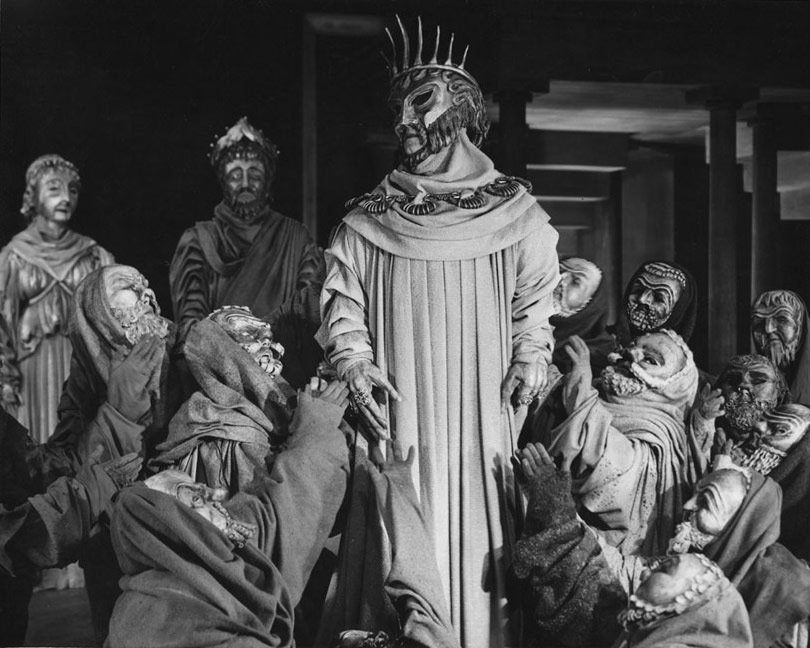
Click to see a larger image
Scene from Oedipus Rex during the third season of the Stratford Shakespearean Festival at the Festival Theatre, Stratford, Ontario (background: Eleanor Stuart as Jocasta and Robert Goodier as Creon; centre: Douglas Campbell as Oedipus), 1955
Stratford Shakespeare Festival photographs
C 224-21
Archives of Ontario, I0055092
Clip from Ontario à la carte, 1976
Ontario government tourism films
RG 5-2-0-41-1
Archives of Ontario
By featuring the Shaw and Stratford Festivals, this Government of Ontario tourism promotion film demonstrates the importance of these festivals in attracting visitors to the province.